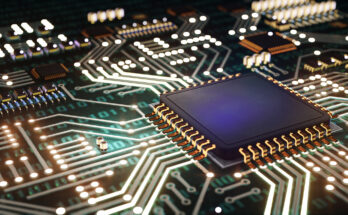
With Ukrainian forces readying a counteroffensive against Russian positions in eastern and southern Ukraine, President Volodymyr Zelensky is traveling to European capitals this week to drum up any bit of additional assistance his troops can get in the fight with Russia. The U.S., U.K., and European Union have been sending main battle tanks, drones, howitzers, multiple rocket launchers, missile systems, and radars to aid Ukraine’s defenders, but one item on Ukraine’s list, fighter jets, has remained unfilled, and President Zelensky has worked to change that in discussions with European leaders.
Zelensky’s message is beginning to resonate. British Prime Minister Rishi Sunak on Monday acknowledged the difficulty in supplying Western jets to Ukraine, but stated London would be “a key part of the coalition countries” supporting Ukraine’s bid to acquire the aircraft. President Emmanuel Macron of France said the same day that Paris has “opened the door to training pilots.” This would be a significant step, enabling Ukrainian personnel to quickly deploy and maintain Western jets like the F-16 should they receive an approval for delivery.
Fueled by the myth of the “Ghost of Kyiv,” a legendary fighter ace said to have shot down numerous Russian jets, Ukraine’s Air Force defied expectations of defeat in the early days of the war. A pre-war presumption was that the superior Russian Air Force would rapidly eliminate all or most of Ukraine’s air fleet in a hypothetical match-up. The Ukrainian Air Force remains very much operational, however, and the Ministry of Defense recently announced a pilot had completed his 300th combat sortie.
Lieutenant Colonel Rostyslav Lazarenko, a Ukrainian military pilot, finished his 300th combat sortie. This is the record number among Ukrainian Air Force pilots.
📷@Liberov pic.twitter.com/OX6BOTBMXa
— Defense of Ukraine (@DefenceU) May 16, 2023
Even so, the Air Force’s operations are constricted by newer Russian aircraft with updated avionics and longer-range missiles. Ukrainian pilots have talked to media to urge the delivery of Western jets to fix the power imbalance in the skies. F-16 pilots would be able to detect incoming threats themselves rather than rely on ground-based radar operators to warn them, an Su-25 pilot told BBC News in an interview this month.
Kyiv’s partners in the West have sent MiG-29s, which Ukraine’s military can either fly or cannibalize for parts to support the existing fleet, but the line has been drawn at the delivery of Western-made combat jets, with the U.S., in particular, opposing the transfer. Washington has not entirely ruled out sending F-16s to Ukraine, but does not see an urgent need to send them now. In February, President Joe Biden told ABC News that “there is no basis upon which there is a rationale, according to our military now, to provide F-16s.” The veto on combat jets could cover U.S.-made aircraft in allied inventories as well. The U.S. is sensitive to Ukraine’s need to guard its skies, but has prioritized the delivery of air defense systems that now protect Kyiv and other major population centers.
The hard stance on fighter jets may change, as over time Western capitals have grown increasingly willing to supply advanced armaments to Ukraine. Initial reluctance in the West to supply Kyiv with armaments stemmed from concern about escalating tension with Russia, but this stance has given way to a willingness to more staunchly aid Ukraine as it became apparent that Moscow intended escalation regardless. Besides pressure from Kyiv and European allies, the Biden administration is also hearing from lawmakers domestically. A bipartisan group of U.S. Senators sent a letter to Defense Secretary Lloyd Austin in March, writing that “the U.S. needs to take a hard look at providing F-16 aircraft to Ukraine.”
Seen through the perspective of hardware procurement cycles, the crisis between Russia and the West over Ukraine began right as Ukraine’s military inventories were in their late stage of operation, necessitating renewal. Russia’s armed forces had just concluded a massive rearmament program undertaken throughout the 2010s, but the Ukrainian armed forces of the 2010s and early 2020s were increasingly facing obsolescence, put in a place of needing to either replace inventories or retire capabilities. Ukraine’s air force, composed of Soviet-legacy platforms, especially faced this dilemma.
On the eve of Russia’s invasion, Ukrainian pilots were still operating airframes inherited or acquired around independence, albeit repaired or upgraded over the years. Russia, by contrast, had renewed much of the aircraft in its inventory as it launched the “Special Military Operation” in February 2022. From a hardware and personnel quantity standpoint, on land and in the air, Russia outnumbered Ukraine. As many of the projects in Russia’s state armaments program concluded throughout the 2010s, Russia also viewed the quality of its land and air forces as having lapped Ukraine’s. Russia’s leadership was confident that any defense could be defeated quickly, underappreciating Ukrainian motivation as well as the armed forces’ experience in fighting conventional war.
Military officials in Ukraine were well aware of the need to acquire replacements but ran into roadblocks with funding, given that all service areas were in neglect. Ukraine’s military was very underfunded prior to 2014, and while the budget grew at a rapid pace after Russia annexed Crimea, it was still too small to support a true overhaul of the armed forces. A major modernization plan, dubbed “Vision 2035,” called for UAH370 billion to be spent through 2035 on acquiring new airframes. More than half of this amount would be spent on combat jets. It did not call for a full renewal and replacement of the air fleet, but already the combined project plan was more than triple the annual defense budget for the year the plan was announced – 2020.
Faced with budget shortages, Kyiv looked to partners who would sell an off-the-shelf fighter jet product or assist in funding development costs, as the Ukrainian industry had dreams of producing a clean-sheet jet. Prior to 2014, Ukraine’s defense industry was still integrated in Russian supply chains, including and especially in aerospace. Conceivably Ukraine could have procured Russian airframes like the Su-30SM, as its neighbor Belarus is doing, which would have deepened Ukrainian dependence on Russia. However, Moscow’s annexation of Crimea and subsequent backing of separatists in Donetsk and Luhansk unsurprisingly shut the door on any further defense cooperation.
Ukroboronprom (UOP), Ukraine’s state defense industrial conglomerate, instead turned to defense companies in the West. Partnerships proved slow to develop. Western governments were leery of aggravating the situation with Russia, and corruption in UOP companies hurt their appeal as potential partners. It was considered significant in 2017 when the Trump administration approved the sale of M107A1 sniper rifles to Ukraine, as previously the U.S. was only willing to deliver “non-lethal” military equipment. Defense industrial cooperation with the West in those days, only six years ago, was still a long-term goal for Ukraine.
It is tough to say whether Ukraine would have fulfilled Vision 2035 in the absence of war, but implementation was already faltering, making it likely that the program would have been scaled back. But in the wake of the war, the overhaul of Ukrainian forces that Kyiv could not pay for and the West was leery of backing is now taking place. Moscow feared a NATO-armed Ukraine, but the Kremlin’s own invasion project served as a catalyst for the introduction of a massive amount of NATO-origin hardware into Ukrainian service. Until last year, Ukraine was only beginning to test the production of a domestically made 155mm howitzer; now the country has taken delivery of hundreds of towed and self-propelled systems shooting that caliber. A similar story may occur with combat jets, with the next Ghost of Kyiv sitting in an F-16 cockpit.
The Ghost of Kyiv mural has been officially unveiled in the Podil district of Ukraine’s capital. pic.twitter.com/j8rpRlAJBv
— Dan Peleschuk (@dpeleschuk) August 27, 2022
Military markets analyst, covering Eurasia, Middle East, and Africa.




